Story by Holly Clermont, Project Lead, We All Take Care of the Harvest (WATCH) Project
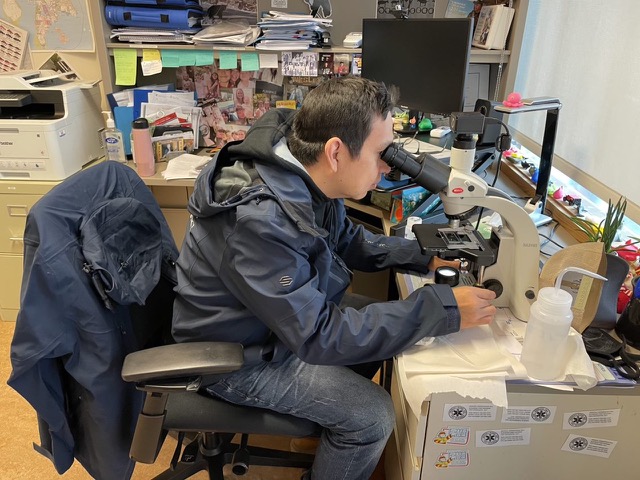
On a government dock on Cortes Island, Klahoose fisheries manager and We All Take Care of the Harvest (WATCH) Community Lead Byron Harry slowly raises a cone-shaped phytoplankton net, or “tow sock" to the surface. Phytoplankton specialist Jay Pudota (Samudra Environmental Consulting) is at his side, advising him to swish the net back and forth in the water before he lifts it out. The motion helps guide any stray organisms on the net's surface into the bucket at the narrow “cod end" of the net. Once he removes the bucket from the net, Harry pours the water into a labeled plastic sample bottle. He uses a second device - an alpha bottle - to collect “discrete" water samples at depths of one, five, 10 and sometimes 15 meters. While the plankton tow net concentrates the plankton to see what kinds are present, the discrete water samples more precisely show how many plankton cells are in the water. The community can use this information to track the status of a harmful algal bloom (HAB). To help understand how blooms form and dissipate in local waters, the team then measures and records temperature, salinity, dissolved oxygen, and pH-the measure of how acidic or basic the water is. The pair repeat this process at several other sites. A goal on this May 30th training day is to get more familiar with the sampling protocols and equipment used by WATCH community-based monitoring programs. Net, alpha bottle, environmental variables, repeat. It gets easier each time. But this duo is also on a mission: to look for three types of harmful algae, microscopic single-celled plants that can produce dangerous toxins.
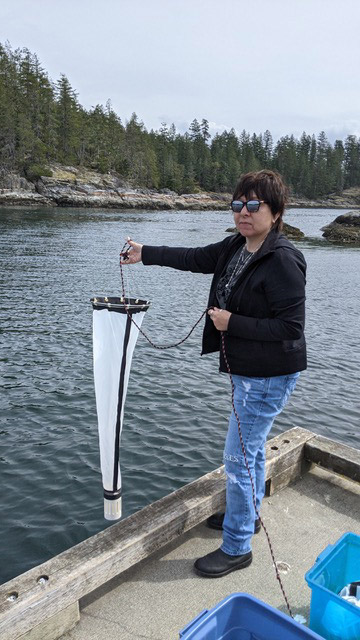
Back at the Klahoose fisheries office, Harry pipets a few drops of the water sample onto a gridded slide, and with his microscope scans back and forth along the slide looking for the telltale shapes of the harmful algae. Of greatest concern is Alexandrium, a dinoflagellate shaped like a hamburger (with buns and patty) that is linked to Paralytic Shellfish Poisoning (PSP). Like any phytoplankton, Alexandrium can very quickly multiply or “bloom" when temperature, light and nutrient conditions are favourable for them. The powerful saxitoxins are concentrated in filter-feeding shellfish such as clams and other plankton-eating species. The toxins may create some difficulty for these marine species, but for the unfortunate people and predators along the food web that ingest them, a dining experience can be deadly. Harmful algal events have been known to kill fish, mammals and seabirds. And while there have been few human fatalities in Canada attributed to toxic seafood, illnesses are believed to be significantly under-reported - particularly among Indigenous populations that rely on seafood and likely experience greater exposures.
In every sample, Harry and Pudota find all three of the harmful algae they are looking for. “We were excited to see it but at the same time not happy to see it," Pudota says. Harry agrees. “It was good to see under the microscope and learn how to find it. At the same time, you don't want to see it in your waters, that's for sure."
By itself, a single cell of Alexandrium should trigger a warning to harvesters. For Pseudo-nitzschia, a kayak-shaped diatom (a.k.a. “evil kayaks") that can produce domoic acid and lead to Amnesic Shellfish Poisoning (ASP), Harry and Pudota use discrete samples to count each plankton cell. The threshold for Pseudo-nitzschia is higher than it is for Alexandrium - 100 cells on the slide should trigger a warning. For Dinophysis, the pitcher-shaped dinoflagellate that leads to Diarrhetic Shellfish Poisoning, the threshold is 25 cells. Shellfish can pick up these toxins at the same time, and very little is known about whether and how different toxins interact when they are ingested together, or in lower amounts over time. Harry and Pudota find the numbers are not over the thresholds, but Alexandrium is in every sample.
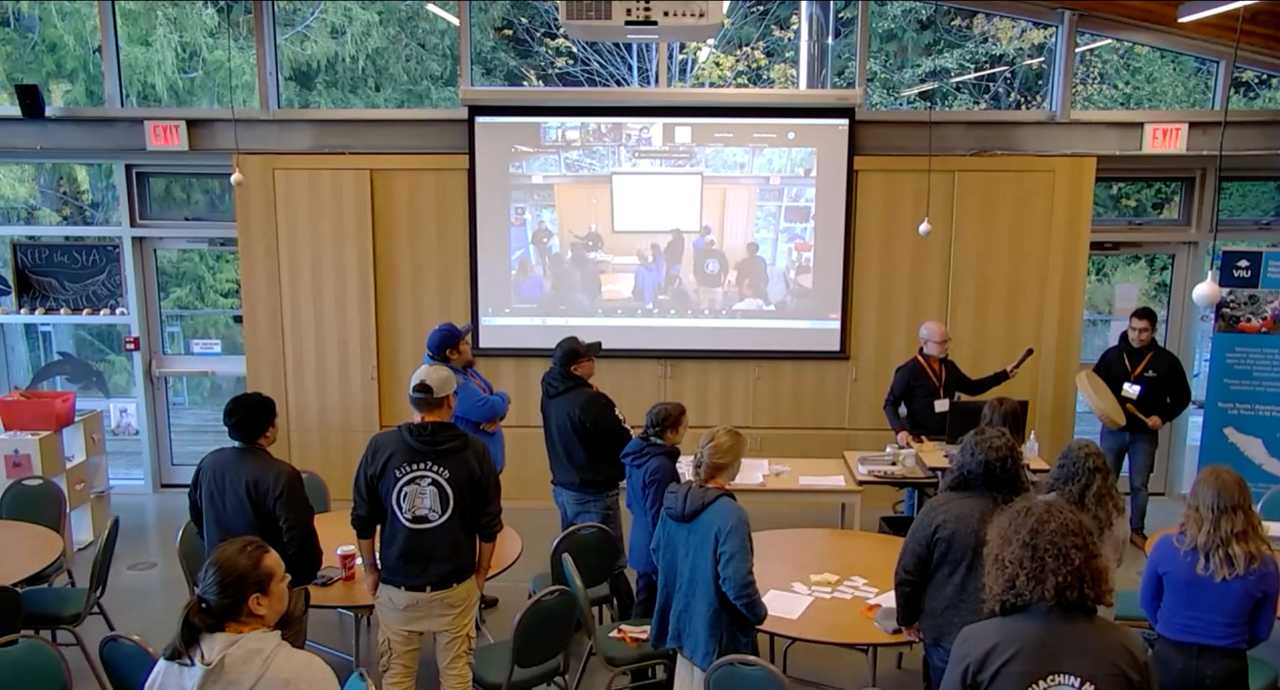
What to do? Over multiple WATCH meetings network members had designed the framework of an early warning system, including steps to take to alert people when blooms are occurring and shellfish might be unsafe to eat:
“Check Fisheries and Oceans Canada (DFO)'s SHELLI system or the BC Centre for Disease Control (BCCDC) shellfish harvest area map to see if the beach is closed, open or partly open (to some species and not others). Notify harvesters and health care providers and other members of the community that you found harmful plankton. Discuss with regulators. Track the bloom." They were mundane-sounding instructions without context - abstract and lacking urgency.
This was about to change. Harry contacts the Klahoose health director, who sets off to find more information and quickly returns. He is clearly alarmed. A few people had already harvested from the beaches, some catch had been distributed in the community, and some was still in the fridge. “We got really worried," Pudota admits.
The health director sought information from the BC Poison Control Centre. Included were Poison Management Manual pages with PSP symptoms, such as how quickly (30 minutes) or slowly (12 hours) that symptoms might appear. Harvesters were notified, and their catch later discarded.
On June 2nd, the Canadian Sanitary Shellfish Program (CSSP) replied to Harry's May 30th email, stating, “detection of toxin-producing algae is not necessarily confirmation of toxin production, nor of toxin uptake in shellfish." Later discussions with the Canadian Food Inspection Agency (CFIA) confirmed that in most circumstances it would not test a catch or re-sample an area based on WATCH phytoplankton monitoring results.
On its surface, the rationale for this was reasonable. Some species of Pseudo-nitzschia do not produce toxin, and others may not produce toxin all of the time, for example. Some shellfish species like Butter clams and Razor clams hold onto toxins for long periods of time. “Basically they said to us that they don't recognize the connection between [the presence of] HABs and toxins in shellfish," remarked Andrew Sheriff, Mahalat Nation Fisheries Coordinator and WATCH Community Lead. “But that's sort of a half-truth. Because toxins come from the algae."
The Washington State Department of Health has found that regional data is foundational to understanding the relationships between phytoplankton and toxin levels in shellfish. On Washington's outer coast, “pretty low" Pseudo-nitzschia cell counts can produce high levels of domoic acid, while millions of cells in Puget Sound produce no or very little of the toxin.
“It really matters where you are and how you know your space to understand what constitutes a risk in your area," Tracie Barry recently told us at a WATCH event co-hosted with Vancouver Island University in November. Barry is a Marine Biotoxin Specialist for the Washington State Department of Health. Neil Harrington of the Jamestown S'Klallam Tribe, she notes, is called Nostradamus by local harvesters. “He can quite accurately tell his community whether it's safe to harvest or if it won't be next week, based on his deep connection and understanding of what happens in that bay, what the trends in phytoplankton are telling him, what his eyes on the water are seeing."
At one time Canada included phytoplankton data when making regulatory decisions. From 1987 to 1997, DFO managed a combined phytoplankton and toxin monitoring program and DFO researchers worked closely with the Inspection branch. This was gradually phased out by federal agencies after a newly created CFIA became responsible for toxin monitoring of shellfish tissue and the national program became more regionalized. This year, a horizontal evaluation of the CSSP conducted by the Government of Canada found that under-resourcing and a mandate that favours products for export are contributors to widespread and long-standing harvest area closures and inequities in program delivery. Such challenges are less apparent in jurisdictions that have embraced phytoplankton monitoring as part of program delivery.
In Washington State, the Department of Health uses phytoplankton monitoring by Tribes and other groups to help determine closure extents and to track blooms for reopening harvest areas. Phytoplankton monitoring and sentinel mussel testing sites are aligned.
“There are all kinds of benefits to this for us," Barry said. “I am checking the phytoplankton maps every single day to let us know where we are headed, to maybe ask for additional sampling…. One of the magical things about phytoplankton sampling is that it is so rapid, and it can be incredibly adaptive."
In Alaska, phytoplankton monitoring by Tribes and Tribal groups act as triggers for further testing for toxins in the water column and in shellfish. In other countries such as Ireland, phytoplankton monitoring is required, with protocols that locate sampling sites in areas that “will be of a predictive nature." Rapid increases in toxin-producing phytoplankton trigger more frequent monitoring until blooms are gone and shellfish are testing clean.
A growing body of literature is predicting more frequent, longer and more intense HABs in a warming world, and new harmful species in our waters. Tracie Barry tells us that the 'biotoxin season' in Washington seems to expand every single year. Data collected by southeast Alaskan Tribes, and CFIA data analyzed by BCCDC for Gitga'at territory show that Alexandrium are found in northern waters in every month of the year. Thanks in part to Puget Sound Tribes, new toxin-producing species have been discovered in Washington, and their collaborative network of monitors is watching for them.
We along the BC coast - we are a data gap. WATCH monitors like Byron Harry and Andrew Sheriff are doing what they can to keep their communities safer with phytoplankton monitoring, and new WATCH monitoring communities will be equipped and trained this winter. The WATCH Project has developed two sample Toxic Shellfish bulletins, one intended for community members and another for health care providers. While these bulletins are only examples, they demonstrate the information that can be displayed by working with FNHA's EPHS team. WATCH will continue to work with the regulators on our Advisory Team to effect genuine change, and has initiated a laboratory feasibility study to enhance access to toxin testing for First Nations. However, we must to do more to keep communities safe from biotoxins and microbes and to safeguard seafood security in a changing climate.
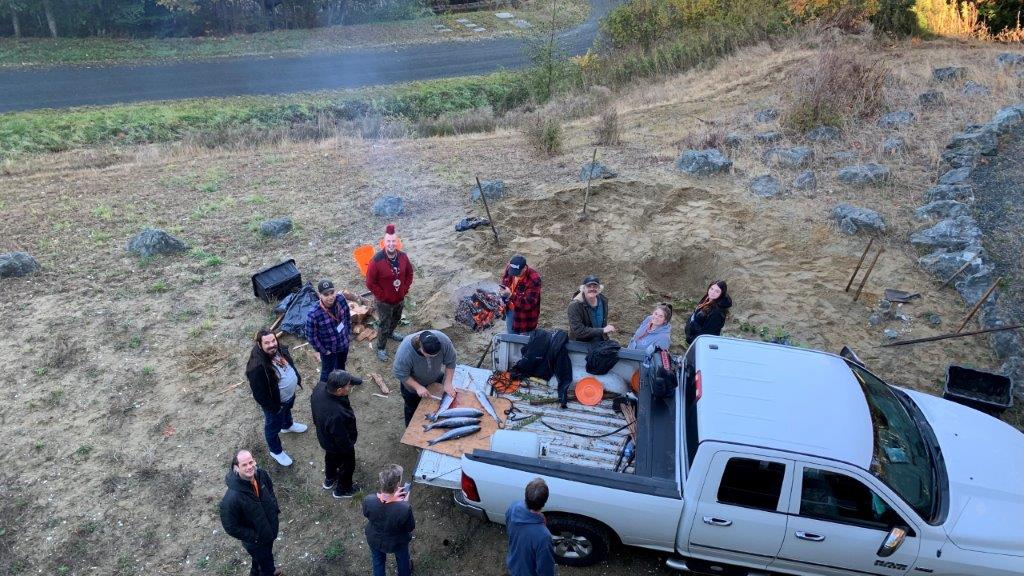
In early November, more than 100 people met at Vancouver Island University's Deep Bay Marine Field Station in early November to imagine a safe and secure seafood system for First Nations. We learned more about the U.S. programs. We shared our stories and concerns and played the role of decision-makers for a while. At the end of the day, everyone was asked to share what they had learned: We are not alone, we have what we need, and we are ready - ready to create a monitoring and testing system that works for First Nations up and down our coast. As 2022 comes to a close, we reflect on WATCH with great hope.
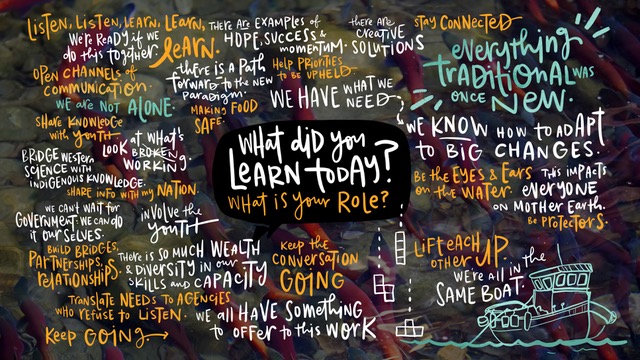
This article was written with the supportive research of publications such as:
Government of Canada, F. and O. C. (2022, September 28). Horizontal Evaluation of the Canadian Shellfish Sanitation Program. https://www.dfo-mpo.gc.ca/ae-ve/evaluations/22-23/96744-eng.htmlLee, M. J., Henderson, S. B., Clermont, H., Turna, N. S., & McIntyre, L. (In review). Beyond a single dose, single outcome: The health risks of marine biotoxins associated with the regular consumption of high quantities of seafood, with a special focus on coastal Indigenous populations. Heliyon.McKenzie, C. H., Bates, S. S., Martin, J. L., Haigh, N., Howland, K. L., Lewis, N. I., Locke, A., Peña, A., Poulin, M., Rochon, A., Rourke, W. A., Scarratt, M. G., Starr, M., & Wells, T. (2021). Three decades of Canadian marine harmful algal events: Phytoplankton and phycotoxins of concern to human and ecosystem health. Harmful Algae, 102, 101852. https://doi.org/10.1016/j.hal.2020.101852

